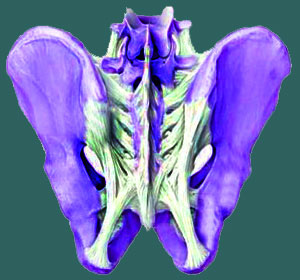
The Gaenslen Test, also known as the Gaenslen Maneuver, is often used as part of the diagnostic evaluation process for suspected sacroiliac joint symptoms. The test is not particularly accurate, but does have some clinical value.
The diagnosis of sacroiliac joint pain is most often a difficult and subjective process. It is no surprise that many patients who actually suffer from SIJ symptomology are instead misdiagnosed with lumbar spinal pathology, hip pathology or even piriformis syndrome. In similar fashion, it is relatively common that patients with muscular lower back pain and various forms of hip pain to be misdiagnosed with SIJ issues.
This essay explores the use of the Gaenslen Test during the diagnostic process for theorized SIJ pathology. We will explain the test and how it is is performed in order to detail its strengths and weaknesses for SIJ evaluation.
What is the Gaenslen Test?
This manual joint manipulation is considered a potential pain provocation in patients who suffer from sacroiliac joint symptoms, as well as some other possible sources of pain, including lumbar spinal issues and femoral nerve issues. The test is most commonly utilized in combination with other similar manipulations to provide a complete picture of how and when symptoms might be triggered by applying motion and stress on the sacroiliac joint.
While not very useful by itself, the test can provide some degree of clinical evidence that might be helpful in narrowing down and pinpointing the specific source of pain in patients who might possibly be labeled with a variety of diagnoses based on symptomatic presentation and basic physical exam. When used with these other tests, Gaenslen can help to increase the accuracy of diagnostic efforts in people with SIJ and some lumbar spinal pathologies.
The procedure bears the name of its inventor and most famous advocate: Dr. Frederick J. Gaenslen, a noted orthopedic surgeon.
Gaenslen SIJ Evaluation Procedure
In order to perform the test, the patent will lie down on their back (supine position) on an examination table, close to one edge. On the side close to the edge, the nearest leg will be allowed to hang off the table freely and unsupported. Then, the opposite leg will be bent upwards at the knee and drawn in towards the chest. This combination of movements extends the hip joint on the side hanging off the table, while flexing the hip joint of the leg drawn upwards towards the chest. In some patients, this simple position is already enough to generate pain. However, the test also involves the therapist or physician applying added pressure to both legs, typically at the knees, in an effort to provoke pain in the sacroiliac joint through increased flexion or extension.
Once the response of the patient has been documented and recorded, the test is most often performed with the extended leg now flexed upwards and the flexed leg allowed to hang unsupported off the table on the opposite side of the body. Of course, the patient’s response will be observed, documented and recorded.
Gaenslen Test Results
This test is noninvasive and carries very low risk. The worst that typically can occur is acute pain upon manipulation of the patient’s anatomy in response to the specific movements of the testing procedure. Since the doctor or therapist is present and able to assist the patient immediately, there is little danger of anything worse that a few moments of acute pain upon worst presentation.
Gaenslen offers the ability to help exclude some possible causes of pain and focus on others that might still be valid conclusions. It is impossible to make an accurate diagnosis of SIJ pathology using this single test alone. Instead, the procedure should always be utilized with other similar pain provocations, as well as with traditional medical exam and joint imaging studies for best diagnostic accuracy and subsequent therapeutic outcomes.
Sacroiliac Joint Pain > Sacroiliac Diagnosis > Gaenslen Test





